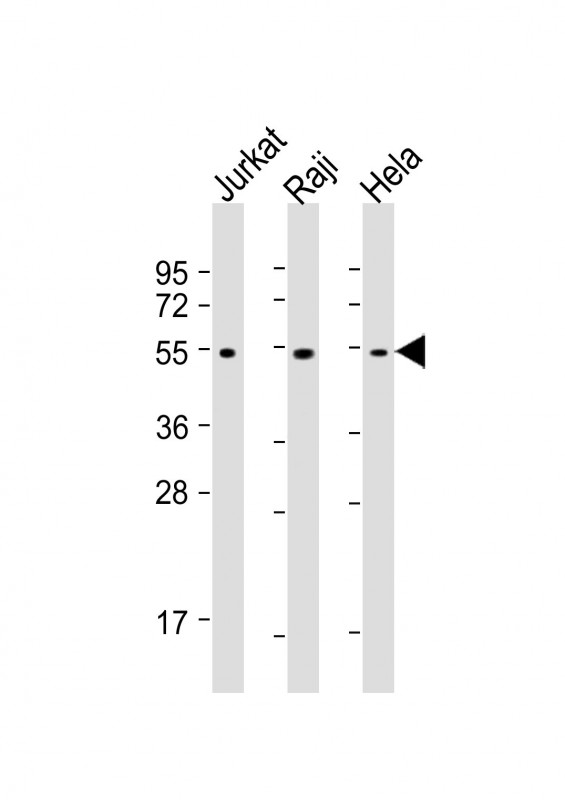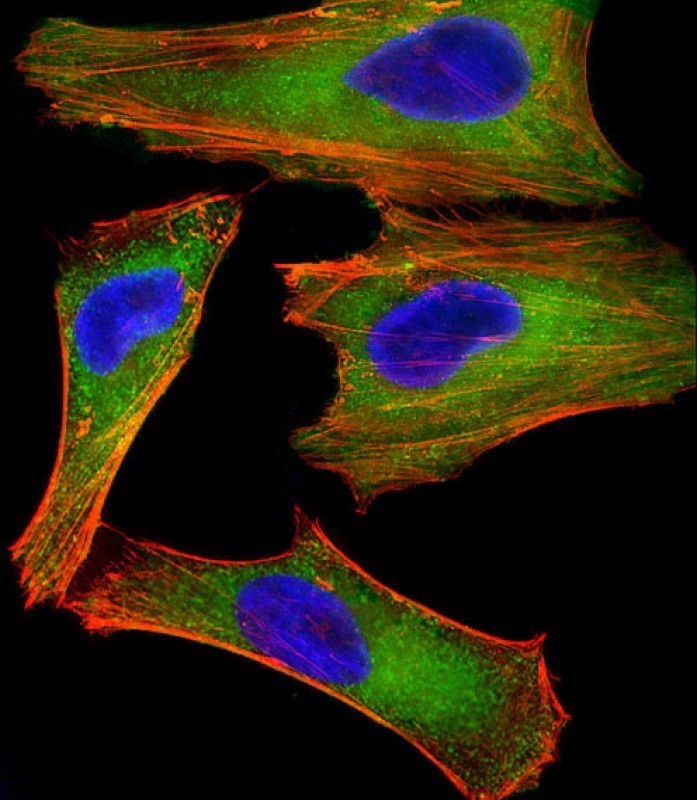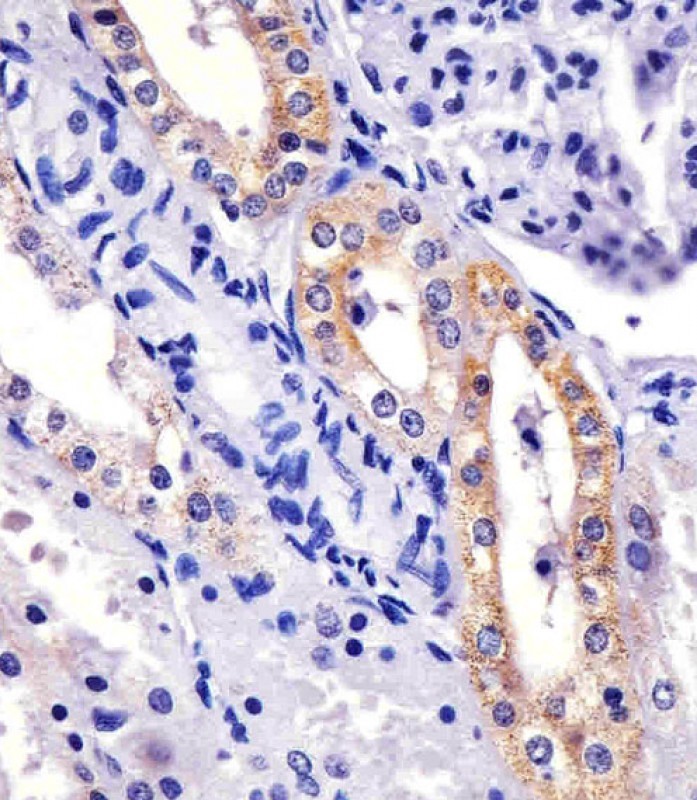


| WB | 1/1000-1/4000 | Human,Mouse,Rat |
| IF | 咨询技术 | Human,Mouse,Rat |
| IHC | 1/100-1/500 | Human,Mouse,Rat |
| ICC | 1/25 | Human,Mouse,Rat |
| FCM | 咨询技术 | Human,Mouse,Rat |
| Elisa | 咨询技术 | Human,Mouse,Rat |
| Aliases | E3 ubiquitin-protein ligase XIAP, 632-, Baculoviral IAP repeat-containing protein 4, IAP-like protein, ILP, hILP, Inhibitor of apoptosis protein 3, IAP-3, hIAP-3, hIAP3, X-linked inhibitor of apoptosis protein, X-linked IAP, XIAP, API3, BIRC4, IAP3 |
| Entrez GeneID | 331 |
| WB Predicted band size | 56.7kDa |
| Host/Isotype | Mouse IgG1 |
| Antibody Type | Primary antibody |
| Storage | Store at 4°C short term. Aliquot and store at -20°C long term. Avoid freeze/thaw cycles. |
| Species Reactivity | Human, Mouse, Rat |
| Immunogen | This XIAP antibody is generated from a mouse immunized with a recombinant protein human XIAP . |
+ +
以下是3篇关于XIAP抗体的代表性文献摘要概括(文献标题与作者为虚构示例,仅供参考):
1. **标题**: *XIAP Antibody-Based Therapy Enhances Apoptosis in Resistant Cancer Cells*
**作者**: Smith A, et al.
**摘要**: 研究利用特异性XIAP单克隆抗体阻断其抗凋亡功能,在化疗耐药的结直肠癌细胞中恢复了caspase-3活性,显著提高肿瘤细胞对化疗的敏感性。
2. **标题**: *Structural Characterization of XIAP BIR2 Domain by Monoclonal Antibody Mapping*
**作者**: Chen L, et al.
**摘要**: 通过开发高亲和力XIAP抗体,解析了XIAP BIR2结构域与caspase-9的结合表位,为靶向XIAP的分子设计提供了结构生物学依据。
3. **标题**: *XIAP as a Biomarker in AML: Validation by Immunohistochemistry*
**作者**: Rodriguez M, et al.
**摘要**: 采用商业化XIAP抗体进行组织染色,证实XIAP过表达与急性髓系白血病(AML)患者的不良预后相关,提示其作为治疗靶点的潜力。
**注**:以上文献为示例,实际引用需检索PubMed等数据库获取真实文献(如搜索关键词:XIAP antibody, XIAP inhibitor apoptosis等)。
XIAP (X-linked inhibitor of apoptosis protein), a member of the inhibitor of apoptosis (IAP) family, plays a critical role in regulating programmed cell death (apoptosis) and cellular survival. Structurally, it contains three baculovirus IAP repeat (BIR) domains that enable interactions with caspases, key enzymes in apoptosis. Specifically, XIAP inhibits caspase-3. -7. and -9 via its BIR2 and BIR3 domains, thereby blocking downstream apoptotic signaling. Beyond apoptosis, XIAP is involved in inflammatory pathways, immune regulation, and cellular signaling, including NF-κB activation.
Dysregulation of XIAP is linked to diseases such as cancer (overexpression promotes therapy resistance), neurodegenerative disorders, and X-linked lymphoproliferative syndrome type 2 (XLP-2), caused by XIAP mutations. XIAP antibodies are essential tools for studying its expression, localization, and function in both normal and pathological contexts. They are widely used in techniques like Western blotting, immunohistochemistry, and flow cytometry. Therapeutically, XIAP-targeting antibodies or small-molecule inhibitors are explored to sensitize cancer cells to apoptosis or modulate immune responses. Monoclonal and polyclonal XIAP antibodies vary in specificity, enabling diverse research applications. Overall, XIAP antibodies bridge fundamental research and clinical translation in diseases tied to apoptosis dysregulation.
×